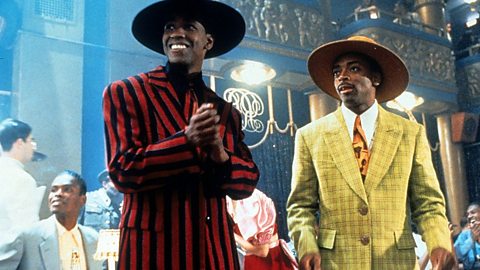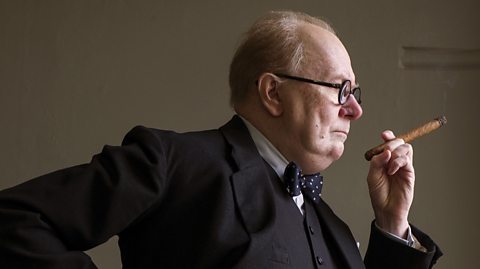If you live in one of the UK’s major towns or cities, you’ll probably be aware of the world beneath the soles of your shoes.
Train networks, car parks, shopping centres - many of them have been built below ground in recent years, but our history is packed with fascinating stories of subterranean curiosities, both natural and made by human hand. It’s a world of tunnels, treasures, underground rivers and even the occasional ghost story. They are parts of the UK we don’t always see - unless we dig a little deeper.
A subterranean ‘city’ to shelter from the Blitz
During the Second World War, the tunnels and platforms of the London Underground network proved effective as air raid shelters when enemy bombs fell. It was also possible for Londoners to take shelter in another network of caverns and passageways carved out by people decades beforehand - and trains were specially laid on from the capital to take them there.

Chislehurst Caves in Kent is made up of around 35km of tunnels, although it began life as a chalk and flint mine dating back to the 13th Century, so the ‘caves’ were actually dug out rather than naturally formed.
In the 1930s, long after the mining ended, the caves proved the ideal conditions for mushroom farming. When war broke out in 1939, volunteers began organising the caves as an air raid shelter and by the autumn of 1940, around 5,000 people were using the caves each night with a series of shelters established throughout them. At its peak, 15,000 people a night were sheltering there, either locals or people who travelled in especially to use them, with many coming from London’s East End.
It became such a popular place to seek safety, captains were appointed to run the different shelter sections and a canteen was set up, making 1,000 cups of tea each night and up to 200 hot dinners. There were rules - music had to stop by 9pm, the same time that all rubbish had to be in bins. Stoves were also banned for safety reasons. As the war progressed, Chislehurst proved such a vital destination, it developed its own hospital, gymnasium, barber shop, cinema and even a dancefloor. A baby girl born there was given the middle name Cavena, to mark the place where she entered the world.
At the end of the hostilities, Chislehurst became a music venue, where acts such as Jimi Hendrix and David Bowie performed. The caves can still be visited today.
The secret river which named Belfast
Belfast is the bustling capital of Northern Ireland, yet anyone passing through the city centre streets may not realise the reason for its names is buried less than a metre below the pavement.
Béal Feirste, the Irish name which translates as ‘the sandy ford at the mouth of the Farset’ relates to the River Farset. The river runs into the Lagan - a waterway still visible to the naked eye - but in the 17th and 18th Century, the banks of the Farset in the west of the city would have been alive with the sound of mills producing Belfast’s world-renowned linen .
The Farset also became a place where people liked to dump rubbish and, eventually, the smell became so unpleasant that something had to be done about it. By 1848, the River Farset was buried beneath one million bricks and has flowed underground in its vault ever since. It is just 60cm below the streets of the city, but no longer seen or heard.
The secret Welsh tunnel which saved Leonardo
Similar to the Chislehurst tunnels which gave thousands of people in the south of England shelter during the Second World War, a smaller one in Wales helped to keep a priceless collection of national treasures safe.
When war was declared in September 1939, a special convoy of trains carrying masterpieces and artefacts from cultural institutions - including the British Museum, who sent 25 containers worth from its collection - made their way to Aberystwyth and the National Library of Wales. It had been agreed in plans drawn up in 1933 that such items should be stored for safekeeping in the event of a major conflict.

Care had to be taken to ensure the items did not deteriorate during storage. The collection included pages from the Magna Carta and drawings by Leonardo da Vinci, so a specially constructed, air conditioned and temperature controlled tunnel was carved into the rock near the building. The secret tunnel did its job and everything was returned safely to its former homes by May 1946.
Speaking to the 91»»±¨ in 2009, Delwyn Tibbot, son of then-deputy librarian Gildas Tibbot, said: "Every night my father, a policeman and a member of the British museum staff, would go down to the tunnel to ensure that everything was as it should be."
The spookiest place in Scotland?
Beneath the South Bridge of Scotland’s capital city Edinburgh, a series of chambers can be found. It follows the bridge’s construction, which began in 1875. Made up of 19 stone arches, South Bridge spanned a crevasse more than 300 metres long and stood almost 10m tall at its highest point.
With space at a premium in Edinburgh, shops and homes started to be built on the bridge itself, and the spaces in the arches eventually had floors and walls built into them to create further space, including workshops and storage for the trades above. The vaults weren’t suitable for businesses as they leaked easily, so were soon abandoned by tradespeople. It is thought they later became a popular place for families to squat. There are no official records to prove this, but evidence of people living there, such as old toys and pots and plates, were discovered during excavation work. The vaults were then largely forgotten until 1985, when building work revealed the spaces tucked away within the arches.
In the 21st Century, the atmospheric vaults have become popular with people interested in ghosts and supernatural activity, with tours proving popular. As part of a 91»»±¨ documentary, the actor and presenter Joe Swash spent four hours alone in the vault one night, to see if he could witness any spooky activity at first hand.
Although he didn’t hear anything unusual at the time, later inspection of the footage revealed background voices. Explanations such as sounds coming from a nearby nightclub or the microphones picking up faint radio signals were ruled out by an audio expert examining the footage on the programme - making the voices something of a mystery.
This article was published in June 2021 and last updated in February 2023
The history lessons that may be hidden in nursery rhymes
What's really going on in Humpty Dumpty, Baa Baa Black Sheep and more?

Five artists who popped up in their own creations
Have you spotted these painters, authors and film-makers in their own works?

Six times films got WW2 wrong
WW2 has more movies about it than any other war in history, but movie-makers still manage to get the history wrong.
